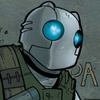

Java developer by day, Julia developer by night.
Amateur philosopher
Sometimes funny...
Working Dad
Controversial things about me:
Everyone: transhumanist, into AI (art)
Right-wing: polyamorous (married), agnostic atheist, leftist, working class consciousness
Leftist: corporate drone by day, loyal citizen of the US (but a serious reformer), former libertarian
I hope you can look past all that though, we people need to stick together
Lives with: Wife, T (son), and A (daughter).
This profile is from a federated server and may be incomplete. Browse more on the original instance.